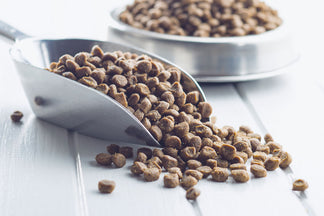Today we move to the letter “J” in our ingredient A to Z series and are featuring Jicama as our ingredient of the day.
What is Jicama?
According to Wikipedia, Jicama, which is scientifically known as Pachyrhizus erosus, is the name of a native Mexican vine, although the name most commonly refers to the plant's edible tuberous root. Jicama is part of the bean family.
Common names for Jicama
The most common name variations for Jicama are Mexican yam, Mexican potato, or Mexican turnip.
Why is Jicama included in pet food?
Jicama is added to pet food for two key reasons: 1) it is a good source of dietary fiber and 2) it is a source of Inulin which can be used as a prebiotic to aid digestion.
Jicama is not often included in cat food and is just recently becoming more common in dog food as a novel carbohydrate source.
Common benefits or risks of Jicama
Benefits: There are many benefits of Jicama. Jicama is high in dietary fiber. It is somewhat sweet, which makes us wonder why more food companies don’t use it as a sweetener instead of sugars. Jicama is a source of inulin which is a prebiotic to aid digestion. Jicama is also high in vitamins C and A, and is a source of calcium and phosphorus.
Risks: While the Jicama bulb, which is what is sold in stores, is safe for dogs to eat, the leafs and seeds are not.
Miscellaneous facts about Jicama
- Jicama is low in calories and high in fiber. A four ounce serving has 43 kcals, 6 grams of fiber, and almost 1 gram of protein.
- The Jicama vine can reach a height of 13–16 feet and its root can grow up to 6.5 feet long and weigh up to 45 lbs.
Sources and further reading
http://en.wikipedia.org/wiki/Jicama
http://www.fatsecret.com/calories-nutrition/generic/jicama-raw?portionid=183727&portionamount=4.000



 Food
Food
 Food
Food
 Food
Food
